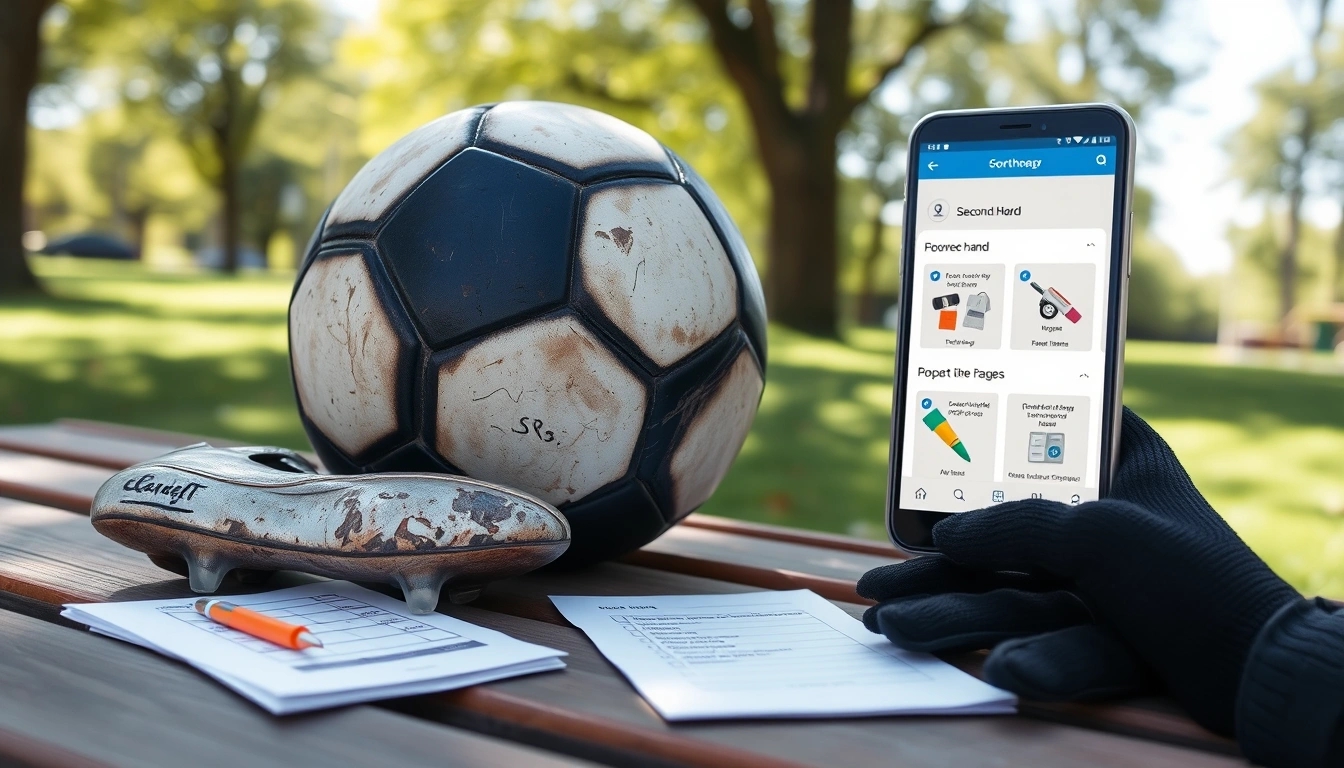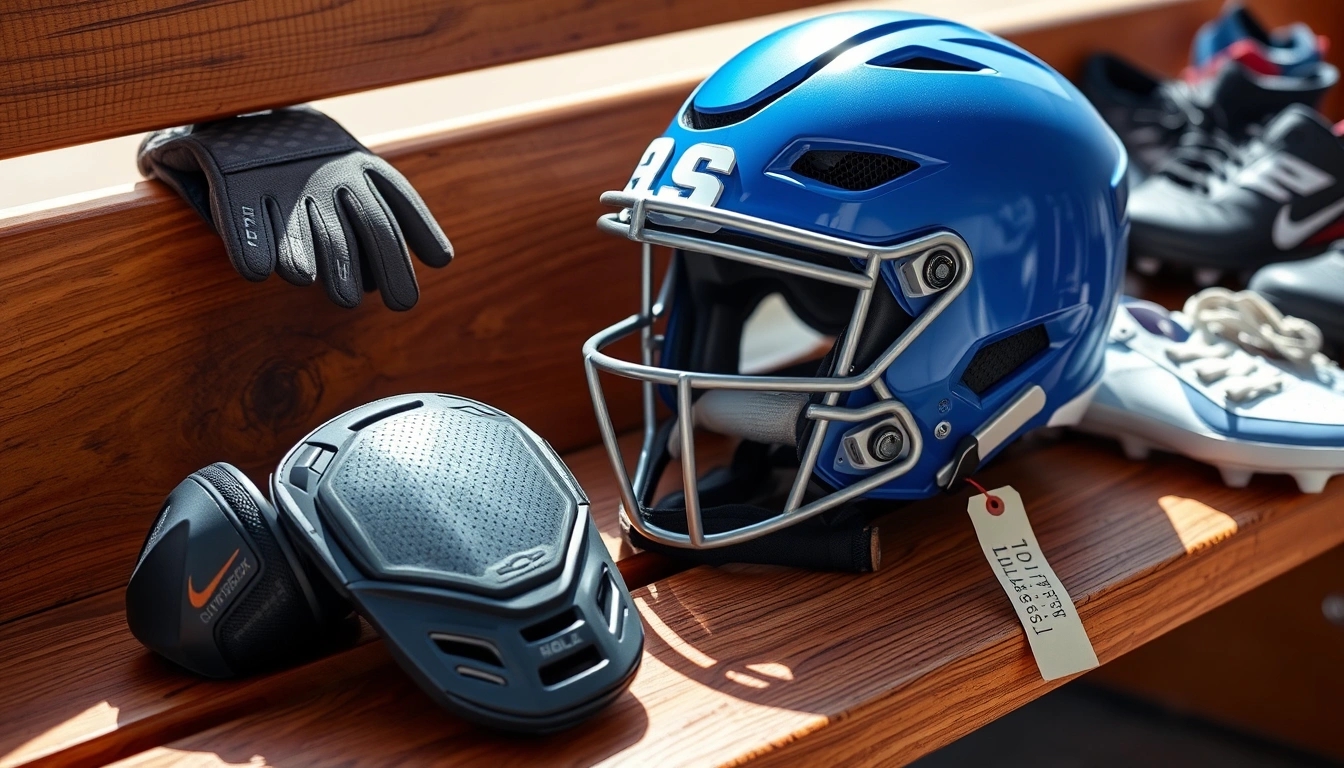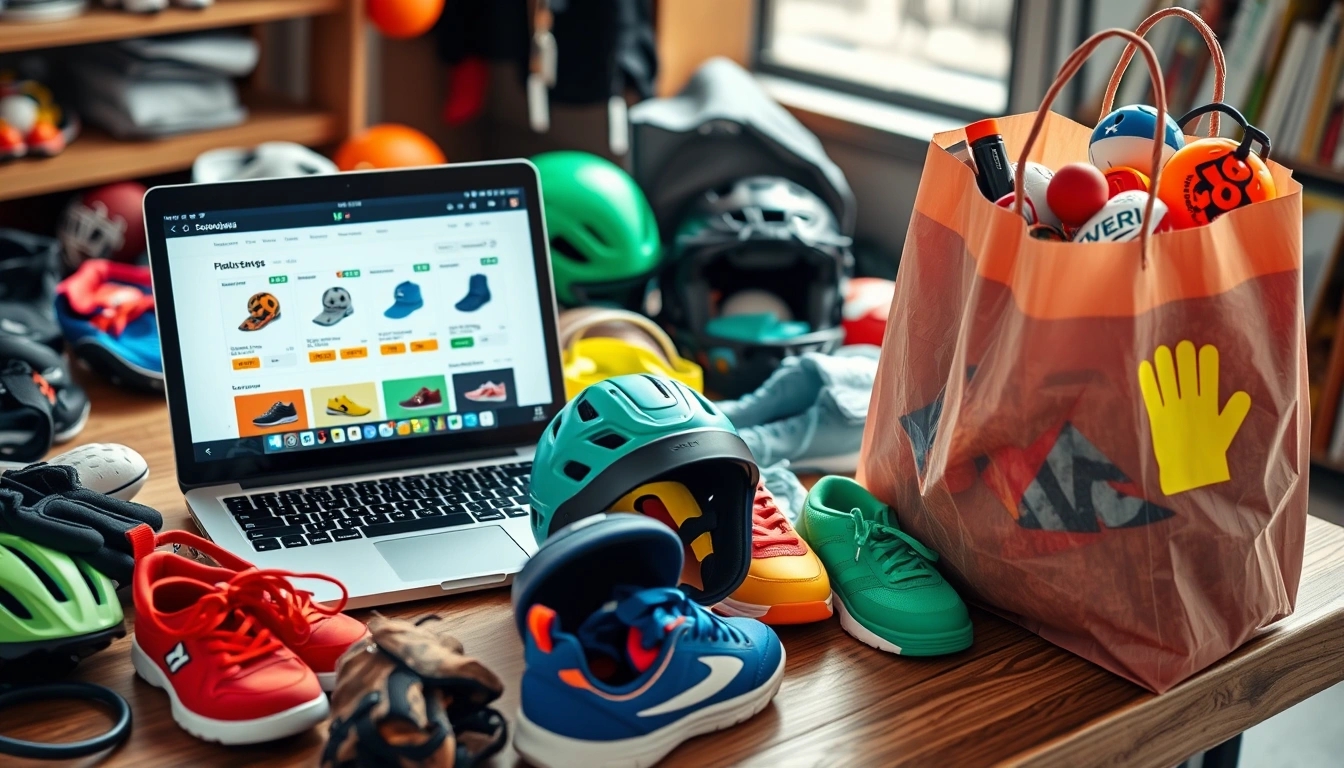Navigating the wild jungle of kids’ sports gear shopping without turning your wallet into a sad, empty shell? Yeah, it’s like trying to catch a greased pig sometimes. But hey, don’t throw in the towel just yet! With a sprinkle of savvy and a dash of patience, you can snag some pretty sweet deals and keep your little champs kitted out without selling a kidney.
First off, you gotta know what your kid actually needs. I mean, no point buying a top-of-the-line baseball glove if Junior’s just kicking the ball around the backyard, right? So, sit down and figure out the sport, how often they hit the field, and their skill level. This little checklist helps dodge the “I bought this expensive thing and it’s just collecting dust” trap.
| Sport | Essential Gear | Optional Gear |
|---|---|---|
| Soccer | Cleats, shin guards, ball | Goalkeeper gloves, training cones |
| Baseball | Glove, bat, helmet | Batting gloves, sliding shorts |
| Basketball | Sneakers, ball | Arm sleeves, knee pads |
Now, setting a realistic budget is the next biggie. Don’t get sucked into the “more expensive equals better” myth. Sometimes, mid-range gear does the trick just fine, especially if your kid’s still figuring out if they love the sport or not. Think about it like this: quality matters, but balance it with cost. You don’t want to blow your entire paycheck on gear that’s gonna be outgrown in six months.
Here’s a little insider tip: second-hand gear can be a goldmine. Yeah, I know, “used” sounds kinda iffy, but if you know where to look and what to check, it’s a total win. Check out local sports consignment shops, online marketplaces, or community swap meets. Just make sure to inspect for cracks, worn-out padding, or any funky smells (seriously, nobody wants stinky gear).
- Pros of buying used: Cheaper prices, eco-friendly, often high-quality items still in good shape.
- Cons: Limited selection, potential wear and tear, no warranty.
Timing your purchase can save you a boatload too. Sales pop up like mushrooms after rain—think end-of-season clearances or holiday specials. Keep an eye on big retail events and sign up for newsletters from your favorite sports stores. Sometimes, just waiting a couple of weeks can mean snagging a 30% discount. Patience pays off!
Multi-purpose gear is another nifty hack. For example, a good pair of sneakers that work for both basketball and running can cut down your expenses. Or a helmet that fits multiple sports. It’s like getting two birds with one stone, and parents love that.
| Gear Type | Multi-Sport Use |
|---|---|
| Sneakers | Basketball, running, general training |
| Helmets | Bike riding, skateboarding, some ball sports |
| Sports bags | Any sport, school, travel |
And hey, safety first, always. Don’t get caught up in flashy designs and forget the basics. Proper padding, helmets that meet safety standards, and well-fitted gear can save your kid from nasty injuries. Luckily, you can find affordable options that don’t skimp on protection.
Renting gear is also a nifty little trick, especially for sports your kid might only dabble in for a season or two. It’s like borrowing a cup of sugar but for shin guards. Check local sports shops or community centers for rental programs.
Finally, don’t underestimate the power of DIY maintenance. A little TLC—cleaning, tightening straps, patching up minor tears—can stretch the lifespan of gear way beyond what you’d expect. Plus, it’s a great way to teach kids responsibility.
So, there you have it: a no-nonsense, slightly sarcastic guide to keeping your kids sporty without going broke. Remember, it’s all about knowing what you need, being patient, and thinking smart. Now go forth and gear up like a pro!
Understanding Your Child’s Sports Needs
Alright, parents, before you run off to buy every shiny piece of sports gear in the store, take a deep breath and let’s get real for a second. Kids grow fast, and their sports interests can be as unpredictable as the weather. So, the first step in gearing up your little athlete is to figure out exactly what they need — not what looks cool or what the neighbor’s kid has. It’s easy to get caught up in the excitement and end up spending a fortune on stuff that just collects dust in the closet. Trust me, been there, done that.
Think about the sport they’re playing. A soccer player isn’t going to need the same gear as a baseball kid, obviously. And within those sports, the level of play matters too. Is your kid just kicking the ball around for fun on weekends? Or are they part of a competitive league that practices multiple times a week? The frequency and intensity of play drastically change what equipment is necessary.
| Sport | Casual Player | Competitive Player |
|---|---|---|
| Soccer | Basic cleats, shin guards, comfortable shorts | High-quality cleats, custom shin guards, practice jerseys, training cones |
| Baseball | Glove, basic bat, helmet | Professional-grade bat, custom glove, batting gloves, cleats, protective gear |
| Basketball | Comfortable sneakers, basic shorts | Performance sneakers, compression wear, ankle braces |
Now, don’t forget your kid’s skill level. A newbie doesn’t need the top-of-the-line gear that a seasoned player might require. Sometimes, starting simple is better. That way, you can upgrade as their skills improve — and you won’t be stuck with expensive equipment that’s suddenly too advanced or unnecessary.
Here’s a quick checklist to keep in mind before making any purchase:
- Sport-specific requirements: Check what the league or coach recommends.
- Frequency of play: More practice better gear needed.
- Skill level: Beginner, intermediate, or advanced?
- Growth spurts: Will they outgrow this gear in a few months?
- Comfort and fit: Never compromise on this — uncomfortable gear unhappy kid.
Honestly, it’s tempting to just grab everything in sight when your kid says, “I wanna try this sport!” But patience pays off. Talk to coaches, other parents, and even your kid. What do they feel comfortable with? What’s absolutely necessary? Sometimes, less is more.
Plus, don’t be shy about asking questions or even borrowing gear to test things out. Renting or borrowing can save you from dropping a ton of cash on something that might only be used for a season or two. And remember, kids grow like weeds — that brand-new helmet might be too small by next season.
So, in a nutshell: do your homework, keep your eyes open, and don’t let the shiny stuff distract you from what really matters — your child’s comfort, safety, and enjoyment of the game. After all, the best gear in the world doesn’t mean a thing if your kid isn’t having fun.
Setting a Realistic Budget
Alright, so you’ve decided to gear up your kiddo for their latest sports obsession — but hold your horses before you start splurging like there’s no tomorrow. Setting a realistic budget is more than just throwing a number out there; it’s about finding that sweet spot where quality meets cost without breaking the bank or ending up with junk gear that falls apart after the first game.
First things first, think about what your child actually needs. Are they just starting out, or are they already hitting the field hard every weekend? Beginners might not need the top-of-the-line, pro-grade equipment right off the bat. On the flip side, if your kid’s a little athlete who’s all in, investing in durable, reliable gear can save you money in the long run because it won’t need replacing after a couple of uses.
| Budget Tier | Who It’s For | Pros | Cons |
|---|---|---|---|
| Low Budget | Casual players, beginners | Affordable, good for trying out sports | Less durable, limited features |
| Mid-Range | Regular players, intermediate level | Better durability, decent quality | Moderate price, not top-tier |
| High-End | Competitive players, serious athletes | Top quality, long-lasting, advanced features | Expensive, might be overkill for casual use |
Now, let’s talk numbers. Don’t just guess — do a bit of homework. Check out prices online, visit local stores, and keep an eye on sales. You’d be surprised how much you can save by simply timing your purchase right. Oh, and don’t forget to factor in the extras: socks, gloves, or whatever little bits your kid might need. Those sneaky add-ons can blow your budget if you’re not careful.
- Tip #1: Set a maximum spending limit and stick to it. No “just this once” splurges!
- Tip #2: Prioritize essential gear first — safety stuff like helmets or pads come before flashy jerseys.
- Tip #3: Think about gear longevity. Sometimes spending a bit more upfront saves you from buying replacements every season.
And hey, don’t underestimate the value of second-hand gear. If you’re willing to do a little digging and inspection, you can snag quality items at a fraction of the cost. Just make sure to check for wear and tear that might compromise safety — because no budget is worth risking your kid’s well-being.
Practical Budget Example:-------------------------------------Total Budget: $150- Helmet: $50 (essential safety gear)- Shoes: $40 (mid-range, durable)- Gloves: $20 (basic, functional)- Extras (socks, tape): $15- Contingency: $25 (for unexpected needs)-------------------------------------
Setting a budget isn’t just about pinching pennies — it’s about being smart, strategic, and realistic. It’s okay if you don’t nail it perfectly the first time. You’ll learn as you go, and soon enough, budgeting for sports gear will feel less like a headache and more like a game plan you’ve got down pat.
So, take a deep breath, grab a notebook (or your phone, because who uses paper anymore?), and start jotting down what your kid really needs. Trust me, your wallet and your little athlete will thank you.

Buying Second-Hand Gear
So, you’re thinking about snagging some used sports equipment, huh? Well, let’s not beat around the bush — buying second-hand gear can be a real mixed bag. On one hand, it’s a wallet-friendly way to get your kid kitted out without selling a kidney. On the other hand, you might end up with gear that’s seen better days or, worse, gear that’s downright unsafe. Let’s dive into the nitty-gritty of what you need to know before jumping into the used gear game.
The Upside: Why Used Gear Rocks
- Cost Savings: This is the biggie. Used equipment usually costs a fraction of brand-new stuff. That means you can afford better-quality gear for less or buy multiple items without breaking the bank.
- Eco-Friendly: Reusing gear is a win for the planet. Less waste, fewer resources consumed — feel good about your purchase!
- Try Before You Commit: If your kid’s just testing the waters in a new sport, second-hand gear lets you avoid splurging on something they might ditch in a few months.
But hold your horses — it’s not all sunshine and rainbows.
The Downside: What Could Go Wrong?
- Wear and Tear: Used gear might have hidden damage. Cracks in helmets, worn-out cleats, or stretched-out gloves can compromise safety and performance.
- Outdated Equipment: Sports gear technology evolves. Older equipment might lack the latest safety features or materials.
- Fit Issues: Kids grow fast! Second-hand gear might not fit perfectly, which can be uncomfortable or even dangerous.
Where to Find Trustworthy Sellers
Not all used gear is created equal, and neither are the sellers. Here are some places that usually don’t disappoint:
| Seller Type | Pros | Cons |
|---|---|---|
| Local Sports Stores (Used Section) | Often inspected for quality, return policies available | Prices can be higher than private sales |
| Online Marketplaces (e.g., eBay, Facebook Marketplace) | Wide selection, competitive prices | Risk of scams, no hands-on inspection before purchase |
| Community Sports Clubs/Leagues | Gear often well-maintained, trusted sellers | Limited selection, timing dependent |
| Garage Sales/Yard Sales | Potential for bargain prices | Little to no quality assurance |
What to Inspect Before Buying
Don’t just eyeball it — get up close and personal with the gear. Here’s a quick checklist:
- Structural Integrity: Check for cracks, dents, or broken parts, especially in helmets, bats, and protective gear.
- Functionality: Test moving parts like straps, buckles, or wheels to ensure they work smoothly.
- Cleanliness: Smell test! If it’s funky, it might harbor bacteria or mold — a no-go.
- Size and Fit: Make sure the gear fits your kid properly. Ill-fitting equipment is a safety hazard.
- Expiration Dates: Some gear, like helmets, has expiration dates. Don’t buy expired items.
Final Thoughts
Buying second-hand sports gear is kind of like dating — exciting but with a few risks. Do your homework, inspect thoroughly, and buy from trusted sources. If you nail it, you’ll save money, reduce waste, and still keep your kid safe and ready to play. But if you’re lazy or in a rush? Well, you might end up with a busted helmet or shoes that fall apart on the field. So, take your time and shop smart — your kid’s safety and your sanity depend on it.
Seasonal Sales and Discounts
Timing is everything when it comes to snagging sports gear for your kids without emptying your wallet. Seriously, if you’re not playing the sale game right, you’re basically handing over cash for full price like it’s going out of style. But hey, who wants that? Let’s break down how to catch those sweet deals and when to pounce on them.
First off, know the sales calendar. Most sports stores and online retailers have predictable sale periods. Think end-of-season clearances—right after summer sports gear has had its glory days, you’ll find discounts on baseball gloves, cleats, and all that jazz. Winter gear? Look for deals right after the season wraps up, usually late winter or early spring. Black Friday and Cyber Monday are also prime times to score big, but watch out for those sneaky “limited time offers” that might not be as limited as they claim.
- End of Season Sales: Best for clearing out last season’s stock.
- Holiday Sales: Black Friday, Cyber Monday, and even back-to-school promotions.
- Mid-Season Discounts: Occasionally, stores drop prices mid-season to boost sales.
Now, don’t just stick to the big-box sports stores. Smaller local shops and online marketplaces often have flash sales or clearance events that fly under the radar. Subscribing to newsletters or joining loyalty programs can give you insider access to coupons and early-bird deals. Plus, some websites have price tracking tools—set alerts and let technology do the hunting for you.
| Sale Period | Typical Discounts | Sports Gear Focus |
|---|---|---|
| Post-Season Clearance | 30%-70% off | Seasonal gear from that sport |
| Black Friday / Cyber Monday | 20%-50% off | Wide range including new arrivals |
| Back-to-School | 10%-40% off | General sports essentials |
| Mid-Season Sales | 15%-35% off | Selected items, varies by store |
But here’s a little nugget: just because something’s on sale doesn’t mean you should grab it blindly. Is the gear actually what your kid needs? Will it fit next season or is it a “grow out of it in two months” disaster waiting to happen? Be picky. Sometimes waiting for the right sale beats rushing into a “deal” that’s a dud.
Also, online deals can be tempting, but don’t forget shipping costs and return policies. A killer price might get eaten up by shipping fees or the hassle of returning ill-fitting gear. And hey, if you’re lucky enough to find a store that price matches, use it! It’s like getting the best of both worlds—instant gratification and a bargain.
Pro Tips for Seasonal Sales:- Plan purchases around known sale events.- Sign up for store newsletters for exclusive deals.- Use price tracking apps to monitor gear prices.- Compare online and in-store prices before buying.- Double-check return policies to avoid headaches.
In the end, shopping smart during sales is like a sport itself—requires patience, timing, and a bit of strategy. So next time you’re gearing up your little champ, don’t just rush in; wait for the right moment, and your bank account will thank you.
Choosing Multi-Purpose Equipment
When it comes to gearing up your kiddo for sports, here’s a little secret: multi-purpose equipment is your wallet’s best friend. Seriously, why buy a separate set of gear for every single sport when one good piece can cover several bases? It’s like the Swiss Army knife of sports gear—versatile, cost-effective, and, frankly, a no-brainer. Instead of shelling out for a new helmet, pads, or shoes every season, focus on items that can pull double (or triple) duty. Your bank account will thank you later.
Let’s break it down. Take, for example, a good pair of athletic shoes. If your child plays soccer, basketball, and runs track, look for shoes that offer solid support and grip across these activities. Sure, they won’t be the ultra-specialized cleats or spikes, but they’ll get the job done without emptying your pockets. The same goes for clothing—think moisture-wicking, durable fabrics that work for everything from baseball practice to weekend hikes. Investing in gear that’s built to last and adapt saves you from a pile of barely-used stuff collecting dust in the closet.
| Type of Gear | Multi-Purpose Use | Why It Works |
|---|---|---|
| Cleats / Athletic Shoes | Soccer, Football, Baseball, Track | Good grip and comfort across various surfaces |
| Protective Helmets | Hockey, Football, Cycling | Standard safety features suitable for multiple sports |
| Sports Bags | Carrying gear for any sport | Durable, spacious, and versatile design |
| Compression Wear | Running, Basketball, Training | Enhances performance and recovery in many sports |
Now, don’t get me wrong—there’s a fine line between smart multi-use and just plain cheaping out. You want gear that’s good enough for multiple sports, not stuff that’s going to fall apart after a couple of uses or put your kid at risk. For example, a helmet designed for cycling might not pass muster for football or hockey, so always check the safety certifications and intended use. Safety first, folks, no shortcuts here.
Here’s a quick checklist to help you spot worthwhile multi-purpose gear:
- Durability: Can it withstand different types of wear and tear?
- Comfort: Is it comfortable enough for various activities?
- Adjustability: Features like adjustable straps or sizing that allow for growth or different fits.
- Certification: Meets safety standards for all intended uses.
One more thing—don’t forget to ask your kid’s coach or fellow parents what gear they swear by. Sometimes, the best multi-purpose equipment is the one that’s been tested and approved by the community. Plus, you might stumble upon some hidden gems or second-hand deals that fit the bill perfectly.
So, next time you’re tempted to buy a new set of shin guards or a fancy new bat, pause and think: “Can this gear pull double duty?” If yes, go for it. If not, maybe hold off until you’re sure it’s a must-have. Multi-purpose equipment is all about working smarter, not harder, and keeping your kid ready to play without breaking the bank.
Remember: The goal is to maximize value and minimize clutter. Because, let’s be honest, kids grow fast and sports gear tends to multiply like rabbits if you’re not careful. Stick to multi-purpose gear and you’ll be laughing all the way to the next game.

Prioritizing Safety Over Style
Look, we get it — kids want to look cool on the field, court, or rink. Those flashy helmets, neon-colored pads, and sleek gloves? Sure, they *look* awesome. But here’s the kicker: safety should always outrank style by a mile. You don’t want your little athlete to be the next headline because of a preventable injury, right? Investing in proper protective gear isn’t just a good idea; it’s an absolute must.
Why is safety gear so important? Well, think about it this way: sports can be unpredictable. One moment your kid is scoring the winning goal, the next they’re tumbling awkwardly or getting a stray elbow to the face. Without the right protection, those bruises can turn into something way worse. Helmets, mouthguards, shin guards, and pads are designed to absorb impact, reduce injury risk, and keep your child in the game longer — and that’s priceless.
But here’s the rub: quality safety gear can be pricey, and not every family has a bottomless wallet. So how do you avoid breaking the bank while still keeping your kid safe? Let’s break it down:
| Tips for Affordable Safety Gear | Details |
|---|---|
| Buy Certified Equipment | Look for gear that meets safety standards (like ASTM, CPSC) — it’s not just a label, it means the product has been tested rigorously. |
| Shop During Sales | End-of-season sales or holiday discounts can save you big bucks on helmets and pads. |
| Consider Second-Hand | Used gear can be a lifesaver financially, but always inspect for cracks, wear, and fit before buying. |
| Rent When Possible | For short-term sports or trial periods, renting gear can be a cost-effective way to get quality protection. |
Now, a quick reality check: sometimes, the “cool” gear kids want doesn’t fit well or isn’t built for serious protection. A helmet that’s off by even a little can be useless in a crash. So, always prioritize fit over flash. Make sure the gear fits snugly, doesn’t shift during movement, and feels comfortable enough to wear for the entire game.
- Try before you buy: If possible, have your child try on gear in-store to check comfort and fit.
- Don’t skimp on critical items: Helmets, mouthguards, and pads are non-negotiable — invest in the best you can afford for these.
- Replace worn-out gear: Old, cracked, or damaged equipment can be more dangerous than no gear at all.
Look, nobody’s saying style doesn’t matter — it does, especially for kids who want to feel confident. But safety should never be an afterthought or sacrificed for the latest trend. You want your kid to play hard, have fun, and come home in one piece. That’s the real win.
So next time you’re tempted to grab that flashy but flimsy helmet just because it looks cool, pause and ask: “Is this gear going to protect my kid when it counts?” If the answer’s no, keep looking. Trust me, safety gear is the unsung hero of every sports story.
Remember: In the game of sports gear, safety is the MVP. And hey, looking smart and protected? That’s the coolest style there is.
Renting Sports Equipment
Alright, let’s get real for a minute about sports gear for kids. It’s expensive—no doubt about it. But here’s a little secret that not many parents shout from the rooftops: can be a total game-changer, especially if your kid is just trying out a new sport or only plays seasonally. Why drop a fortune on gear that’s gonna collect dust in the off-season? Renting offers a smart, wallet-friendly alternative that still gets your child kitted out with quality stuff.
Think about it. Your little soccer star might only play for a few months a year, or your budding hockey player could be testing the waters before going all-in. Buying top-notch gear outright? That’s a hefty investment, and with kids growing like weeds, you’ll be replacing everything before you know it. Renting lets you sidestep all that hassle and expense.
- Flexibility: Rent what you need, when you need it. No long-term commitment, no clutter piling up at home.
- Cost-Effective: Pay a fraction of the purchase price. Perfect for short-term use or trial periods.
- Access to Quality Gear: Many rental services offer high-end equipment that you might not be able to afford outright.
Now, before you rush off to rent everything under the sun, a few things to keep in mind. Not all rental shops are created equal. Do your homework—read reviews, ask other parents, and check the condition of gear before signing on the dotted line. You don’t want your kid showing up to practice with a helmet that’s seen better days or cleats that barely fit.
| Pros | Cons |
|---|---|
| Lower upfront costs | Limited customization options |
| Try before you buy | Potential availability issues during peak seasons |
| Less storage space needed | Responsibility for damage or loss |
Also, don’t forget to ask about insurance or damage policies—because kids and sports gear? Let’s just say it’s a combo that can get messy. Some places might charge you a fee if the equipment gets banged up, so it’s good to be clear on what you’re signing up for.
And hey, if you’re thinking, “But what about hygiene?”—yeah, that’s a valid concern. Make sure the rental shop has strict cleaning protocols. Nobody wants to borrow smelly, grimy gear. A quick call or visit can save you from unpleasant surprises.
In the end, renting sports equipment isn’t just about saving money; it’s about being smart with your resources. It gives you the freedom to support your kid’s passions without feeling like you’re draining the bank account every season. So next time your kid wants to try out lacrosse or skiing for a few months, consider renting first. Your wallet—and your sanity—will thank you.
DIY Maintenance and Repairs
Keeping your kid’s sports gear in good nick isn’t just about tossing it in the closet after a game and hoping for the best. Nope, it’s way more hands-on than that, and honestly, it can save you a ton of cash and hassle down the line. Let’s face it, those shin guards or helmets don’t last forever, but with some basic maintenance and a bit of elbow grease, you can stretch their life way beyond what you thought possible. So, roll up your sleeves—this isn’t rocket science, just some good old-fashioned TLC for your kid’s gear.
- Clean it regularly: Dirt, sweat, and grime are the silent killers of sports equipment. Leaving that muck on your gear is basically inviting it to break down faster. A quick wipe-down with mild soap and water after each use can work wonders. Avoid harsh chemicals—they’re like kryptonite for most materials.
- Inspect for damage: Before you even think about putting that helmet back on your kid’s head, give it a good once-over. Cracks, dents, or frayed straps? Time to fix or replace. Ignoring these signs is like playing with fire—only in this case, it’s your child’s safety on the line.
| Problem | DIY Solution | Tools Needed |
|---|---|---|
| Loose or broken straps | Sew or replace with Velcro strips | Needle, thread, or Velcro kit |
| Worn-out cleats or soles | Replace cleat studs or apply grip tape | Replacement studs, grip tape, screwdriver |
| Faded or torn padding | Patch with fabric glue or replace padding | Fabric glue, spare padding |
Now, I get it. Not everyone’s a DIY whiz or even remotely interested in becoming one. But trust me, these little fixes are usually straightforward. YouTube tutorials are your best friend here—there’s a video for just about everything. And hey, involving your kid in the repair process can be a fun way to teach responsibility and maybe even spark a bit of pride in their gear. Nothing like telling their buddies, “Yeah, I fixed this myself.”
One thing to keep in mind: some repairs are just not worth the risk. If your child’s helmet took a nasty hit, don’t even think about patching it up yourself. Safety gear is a no-joke deal—replace it, no questions asked. But for the small stuff? Dive in and get your hands dirty.
Quick Tips for Gear Longevity:- Store equipment in a cool, dry place (no roasting in the trunk!)- Air out sweaty gear to prevent mold and funky smells- Tighten screws and bolts regularly- Use protective sprays or conditioners for leather or synthetic materials
In the end, a little maintenance goes a long way. Not only does it save you money, but it also means your kid’s gear performs better and keeps them safer. So next time you’re tempted to toss out that slightly battered glove or scuffed helmet, think twice. With a bit of effort, you can keep their sports gear in top shape and ready for action. Because let’s be honest, who wants to buy new gear every season? Not this parent.

Shopping Online vs. In-Store
Shopping Online vs. In-Store: Finding the Sweet Spot for Kids’ Sports Gear
Alright, let’s talk about the eternal tug-of-war: online shopping versus good ol’ brick-and-mortar stores when it comes to buying sports gear for your little champs. It’s not just about grabbing the cheapest deal or the flashiest sneakers; it’s a bit more complicated than that. So buckle up, because this ride might get a little bumpy!
First off, online shopping is like a candy store for parents hunting for deals. The sheer variety is mind-blowing — you can compare prices across dozens of sites without leaving your couch. Plus, those sneaky coupon codes and flash sales? Yeah, they’re real and waiting for you. But here’s the kicker: sizing can be a nightmare. You might order a helmet that’s “supposed” to fit a 7-year-old, but when it arrives, it’s either clown-sized or so tight it could give you a headache. Returns? Sometimes easy, sometimes a bureaucratic mess.
| Online Shopping Pros | Online Shopping Cons |
|---|---|
| Huge selection and variety | Uncertain sizing and fit |
| Convenient, shop anytime | Return policies can be tricky |
| Often better prices and discounts | Delayed delivery times |
| Customer reviews help decision-making | No hands-on feel of the product |
Now, stepping into a physical store? It’s like going to a sports gear playground. You get to touch, feel, and try on equipment — which is a massive plus for kids’ gear where fit and comfort are king. Plus, store staff can offer advice, and you get instant gratification (no waiting for shipping!). But, the downside? Prices might be higher, and the selection could be limited to what’s on the shelves. Also, if you’re a parent with a hyperactive kid in tow, the whole experience can feel like herding cats.
- In-Store Benefits: Immediate fitting, expert advice, no shipping wait.
- In-Store Drawbacks: Higher prices, limited inventory, time-consuming.
Here’s a little nugget of wisdom: sometimes mixing both worlds is the way to go. Try gear in-store to get the sizing right, then hunt online for the best deals on the exact item. Or, if you’re confident about sizes, online shopping can save you a bundle — just keep those return policies close to your heart.
Tips to Nail Your Next Sports Gear Purchase:- Measure your kid’s size accurately before buying online.- Read multiple customer reviews focusing on fit and durability.- Check return and exchange policies BEFORE clicking “buy.”- Visit local stores for bulky or safety gear like helmets and pads.- Use price tracking tools online to catch flash sales.
In the end, whether you’re clicking your way through online carts or wandering aisles in a sports store, the goal’s the same: get your kid the right gear without emptying your wallet or ending up with a neon pink soccer ball that’s too small to kick. It’s a balancing act, but with a bit of patience and savvy, you’ll crack the code.
So, what’s your pick? The convenience of online shopping or the tactile assurance of in-store buying? Either way, just remember: the best deal is the one that fits both your budget and your kid’s growing needs — no sweat!
Involving Your Child in the Buying Process
Alright, let’s get real for a second. When it comes to buying sports gear for your kiddo, it’s tempting to just grab whatever’s on sale or what you think looks cool. But here’s the kicker: if your child isn’t part of the decision, chances are the gear ends up collecting dust in the corner. No joke. Kids want to feel heard and in control, even if it’s just about their shin guards or cleats. So, why not loop them in? It’s a game-changer.
First off, involving your child can seriously boost their satisfaction with the gear. Imagine buying a pair of sneakers that look like they belong in a museum — boring, right? But if your kid picks something they actually like, they’re way more likely to wear it without the usual “Ugh, these are lame” complaints. Plus, it teaches them responsibility and decision-making skills, which is a win-win for everyone.
| Benefits of Involving Your Child | Why It Matters |
|---|---|
| Increased Gear Usage | Kids are more likely to use gear they picked themselves. |
| Boosts Confidence | Choosing their own equipment helps build self-esteem. |
| Teaches Budget Awareness | Kids learn about costs and value, making smarter choices. |
But hey, it’s not always a walk in the park. Some kids might get overwhelmed by choices or just want the flashiest stuff (looking at you, neon everything). That’s where you step in as the savvy parent. Guide them gently — talk about what’s really needed for their sport, what’s safe, and what fits the budget. This is a perfect moment to explain why that $200 bat might not be the best first pick when a $60 one does the trick just fine.
- Step 1: List the essential gear needed for their sport.
- Step 2: Set a clear budget together.
- Step 3: Explore options online and in-store — let them touch and try.
- Step 4: Discuss pros and cons of different brands and styles.
- Step 5: Make the final call as a team.
And don’t forget, this process can be a sneaky way to teach patience and compromise. Your kid might want that ultra-lightweight, super expensive helmet, but you can explain why a mid-range, tested-and-true model is smarter for now. It’s all about balance.
Tip: Always check the gear’s safety certifications together. Kids love feeling like little experts when they spot the right labels!
Ultimately, involving your child in picking their sports gear isn’t just about the stuff — it’s about making them feel part of the journey. They’ll not only use what you buy, but they’ll own it, play harder, and maybe even enjoy the sport a little more because of it. And hey, isn’t that what we all want? Less gear waste, happier kids, and a few less “I hate this” tantrums at the checkout line.
Utilizing Community Resources
When it comes to equipping your young sports enthusiast without emptying your wallet, tapping into community resources is an absolute game-changer. Forget shelling out big bucks for brand-new gear every season — local sports clubs, schools, and community programs often have hidden gems that can save you a pretty penny. Honestly, these resources are like the unsung MVPs of budget-friendly sports shopping.
- Gear Exchanges: Many community centers or sports clubs organize gear swaps where families can trade equipment their kids have outgrown. It’s like a sports gear flea market, but with less dust and more high-fives. You might snag a barely-used pair of cleats or a helmet that’s still in great shape. Just remember to check the condition — no one wants a cracked helmet or worn-out shin guards.
- Loans and Rentals: Some programs offer loaner gear or rental options, especially for seasonal sports or short-term activities. This is perfect if your kid is trying a new sport and you’re not quite ready to invest in all the equipment yet. Plus, it’s a smart way to avoid the classic “gear that sits in the closet forever” scenario.
- Discounts and Subsidies: Don’t be shy to ask! Local schools and clubs sometimes have partnerships with sporting goods stores or receive donations that allow them to offer discounted or free gear to families in need. It’s worth a quick call or visit to find out what’s available — you might be surprised.
| Community Resource | What They Offer | How to Access |
|---|---|---|
| Local Sports Clubs | Gear exchanges, loan programs, discounts | Contact club office or check website |
| Schools | Subsidized gear, equipment loans | Reach out to school sports coordinator |
| Community Centers | Swap events, rental gear | Visit center or community bulletin boards |
Now, here’s a little insider tip: these community resources don’t always scream their availability from the rooftops. Sometimes you gotta dig a bit, ask around, or even join local parent groups on social media to catch wind of these deals. It’s like being a sports gear detective — minus the trench coat and magnifying glass.
And don’t overlook the power of networking. Chatting with other parents can lead to gear hand-me-downs or insider info on upcoming sales and exchanges. Remember, one family’s outgrown soccer ball could be your kid’s new favorite toy.
So, before you rush out and buy brand-new, shiny equipment, take a moment to explore what your community has tucked away. It’s not just about saving cash — it’s about being smart, sustainable, and maybe even scoring gear that’s been “battle-tested” by another kid’s epic game-winning goal.
In summary:
- Check with local sports clubs for gear exchanges and loans.
- Ask schools about subsidized or loaner equipment programs.
- Visit community centers for swap events and rentals.
- Engage with other parents to discover informal gear-sharing opportunities.
- Always inspect used gear carefully for safety.
Leveraging these community resources can keep your kid in the game without making your bank account scream for mercy. Who knew budget sports shopping could be this much fun?

Tracking Gear Growth and Replacement Needs
Ah, the never-ending saga of kids growing faster than your paycheck can keep up with! If you’re a parent navigating the wild world of youth sports, you know the struggle is real. One day, that shiny new soccer cleat fits like a glove, and the next? It’s like trying to cram a watermelon into a sandwich bag. Keeping tabs on when to swap out gear without burning a hole in your wallet is an art—and a bit of a juggling act.
First off, let’s be honest: kids don’t just grow—they *explode* in size, often at the most inconvenient moments. So, how do you stay ahead of the curve? The secret sauce is a combination of vigilance and planning. Keep a simple log or calendar to note when gear was purchased and the size. This way, you won’t be caught off guard when your little slugger suddenly looks like he’s wearing clown shoes.
| Gear Type | Average Replacement Frequency | Tips |
|---|---|---|
| Cleats/Shoes | Every 6-9 months | Check fit monthly; watch for tightness or discomfort |
| Helmets | Every 1-2 years or after impact | Inspect for cracks; safety first! |
| Pads (knee, elbow) | Annually | Look for wear and tear; padding loses effectiveness over time |
| Uniforms | Seasonally | Hand-me-downs work well if clean and intact |
Now, let’s talk about the elephant in the room: money. Replacing gear every few months sounds like a nightmare for your bank account, right? Well, it doesn’t have to be. Here’s where your savvy parent skills come into play. Instead of rushing out to buy brand-new stuff, consider these hacks:
- Swap Parties: Connect with other parents and organize gear exchanges. Your kid’s outgrown helmet could be another’s treasure.
- Second-Hand Shops: Not all used gear is a gamble. Look for reputable stores or online marketplaces with good return policies.
- Seasonal Discounts: Keep an eye out for end-of-season sales when gear is often slashed to clear inventory.
But hey, don’t just eyeball it and hope for the best. Kids’ feet and bodies grow in unpredictable spurts—sometimes overnight. Make it a habit to have a quick gear check every couple of weeks. A tight helmet or a squished pair of cleats isn’t just uncomfortable; it can be downright unsafe.
Pro Tip:Measure your child’s feet and body size regularly.Mark the dates on a calendar or phone app.Set reminders for when it’s time to check gear fit again.
And here’s a little nugget of wisdom: prioritize safety over style. Sure, flashy gear might turn heads on the field, but if it’s too small or worn out, it’s a no-go. A helmet with a tiny crack? Toss it. Pads that have flattened out? Replace them. Your kid’s safety is priceless.
In the end, tracking growth and replacement needs is about finding a rhythm that works for your family. It’s a mix of staying organized, being proactive, and sometimes, just rolling with the punches when your kid suddenly grows out of everything overnight. Don’t sweat the small stuff—gear replacement is just part of the parenting game in the world of youth sports. Keep calm, stay flexible, and remember: those shoes will be outgrown, but the memories on the field? Priceless.
Frequently Asked Questions (The title must be written in English.)
- How can I determine exactly what sports gear my child needs?
Great question! Start by considering the sport your child plays, their skill level, and how often they participate. For example, a beginner might not need all the high-end gear right away. Think of it like packing for a trip—you only take what you really need to avoid carrying unnecessary weight (or costs!).
- Is buying second-hand sports equipment a good idea?
Absolutely! Buying used gear can save a bundle, but it’s important to inspect the items carefully. Look for signs of wear and tear, especially on protective gear. Think of it like buying a used car—you want to ensure it’s safe and reliable before committing.
- When is the best time to buy kids’ sports gear to get the best deals?
Timing is everything! Seasonal sales, clearance events, and end-of-season discounts are golden opportunities. Keep an eye out especially after major sports seasons end—retailers often slash prices to clear inventory.
- Should I prioritize style or safety when choosing sports gear?
Safety always wins. It’s tempting to pick flashy gear, but proper protective equipment is a must-have. Think of it like wearing a helmet on a bike ride—it might not be the coolest look, but it’s essential for keeping your child safe.
- Is renting sports equipment a cost-effective option?
Renting can be a smart move if your child is trying out a new sport or playing only for a short season. It’s like borrowing a tool for a one-time project—you get what you need without the long-term commitment or expense.
- How can I maintain and repair sports gear to save money?
Simple maintenance like cleaning, drying, and checking for damage can extend gear life significantly. Think of it as giving your gear a little TLC—just like you’d oil a bike chain to keep it running smoothly.
- Is it better to shop online or in-store for kids’ sports gear?
Both have perks! Online shopping offers convenience and often better prices, but trying gear in-store ensures a perfect fit. It’s like trying on shoes—you want to make sure they’re comfy before you commit.
- How can involving my child in choosing their gear help?
Getting your kid involved boosts their excitement and ensures they actually use the gear. It’s like letting them pick their own backpack for school—they’re more likely to take care of it if they had a say.
- Are there community resources that can help with sports gear costs?
Definitely! Local clubs, schools, and community centers often offer gear exchanges, loans, or discounts. Think of it as a neighborhood swap meet designed to keep kids playing without emptying your wallet.
- How do I keep track of when to replace my child’s sports gear?
Kids grow fast, so tracking gear size and condition is key. Keep a checklist or calendar reminder to review gear every season—like a pit stop for your child’s equipment—to avoid last-minute scrambles and overspending.












